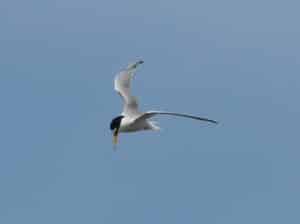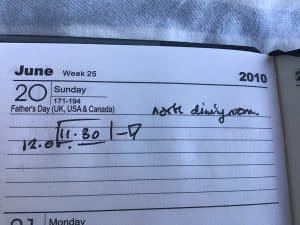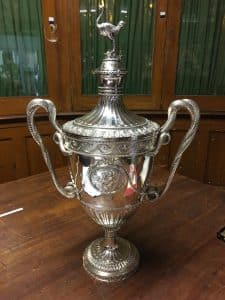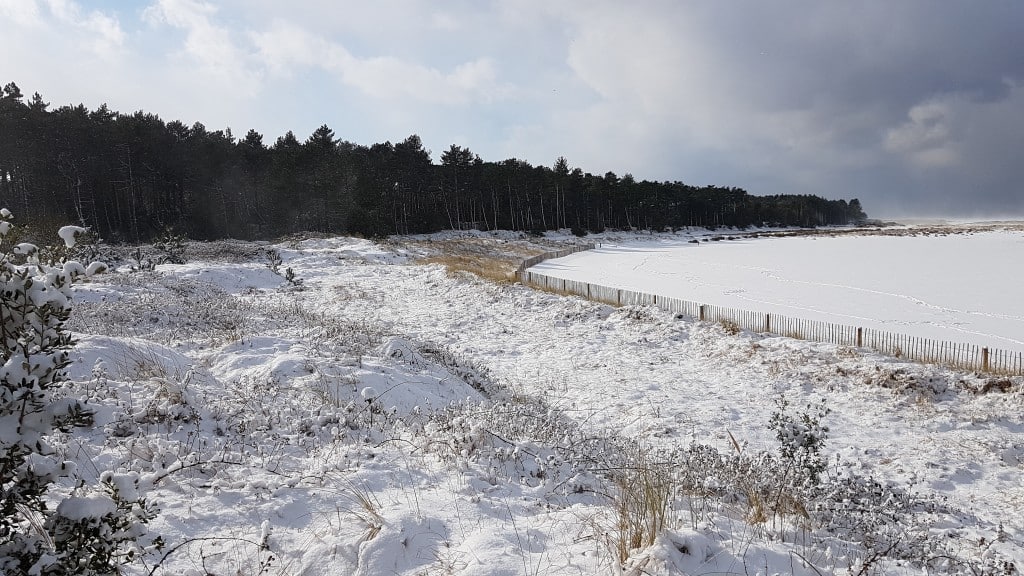
The Aftermath of the Beast
April 5, 2018 | Holkhome | 8 minute read

Having been bemoaning (or celebrating) how mild and uneventful this winter’s weather had been that scenario changed rapidly as February came to a close and the so called ‘Beast from the East’ arrived. We often hear how we are going to get loads of snow amidst seemingly constant amber weather warnings and then left wondering how the forecasters manage to get it all so wrong! This time that was not the case as the predicted arrival of snow and east winds set in all the way across Europe and left its mark on the country, Holkham included.
Jutting out into the North Sea as we do, easterly winds usually mean we will get what is coming and as the wind strengthened we could see the snow clouds appearing too. The snow showers during daylights hours did not seem perhaps as heavy as in some past winters, but combined with the strong winds, it soon created drifts across roads. Sub-zero temperatures combined while the raw wind made it feel even colder too. We got caught out in the blizzard on the first day whilst cutting and burning pine seedlings but had to change our routine somewhat as it became increasingly difficult to get about.

Snow was falling fast over the sand dunes as we were felling invasive scrub and pine seedlings.
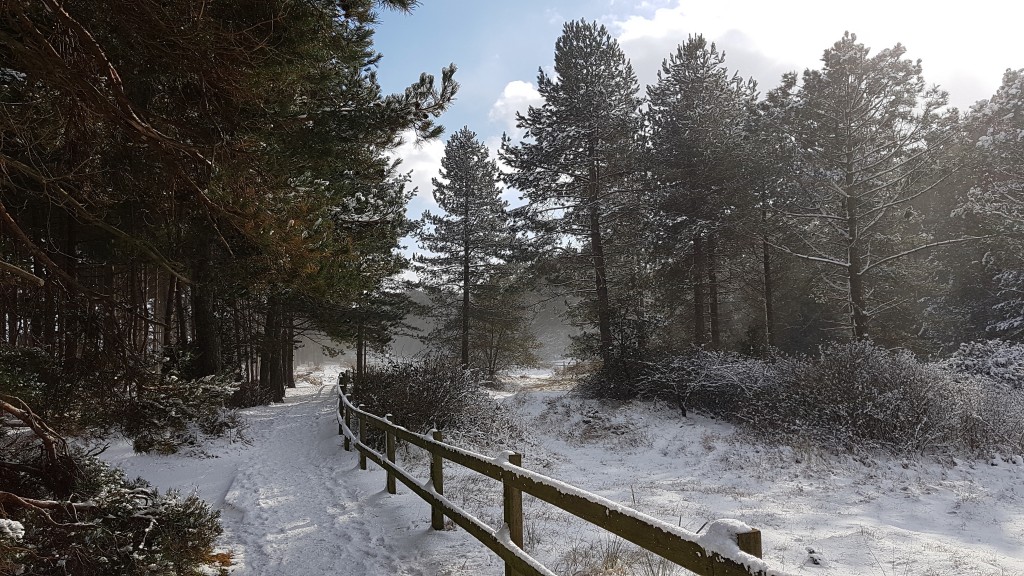
The whole of the reserve took on the appearance of an Arctic landscape.
What we did see was lots of amazing views as the snow transformed the reserve into an arctic landscape. Parts of the marshes looked more like the Siberian Steppe as the wind whipped the snow up into fast moving blizzards whilst the pine woods took on the appearance of Arctic Canada or Lapland. As expected some but not all of our dykes and pools froze over yet rather more unexpected was the sight of our shoreline littered with great lumps of ice. Thankfully the weather came and went over a period of four days but it was enough to really leave a severe impact on our wildlife. Being out and about in the snow can be exciting as it often offers the opportunity to see birds and animals act in a very different way. Some secretive species become more confiding, yet in reality this only means one thing – they are struggling to feed and ultimately exist.
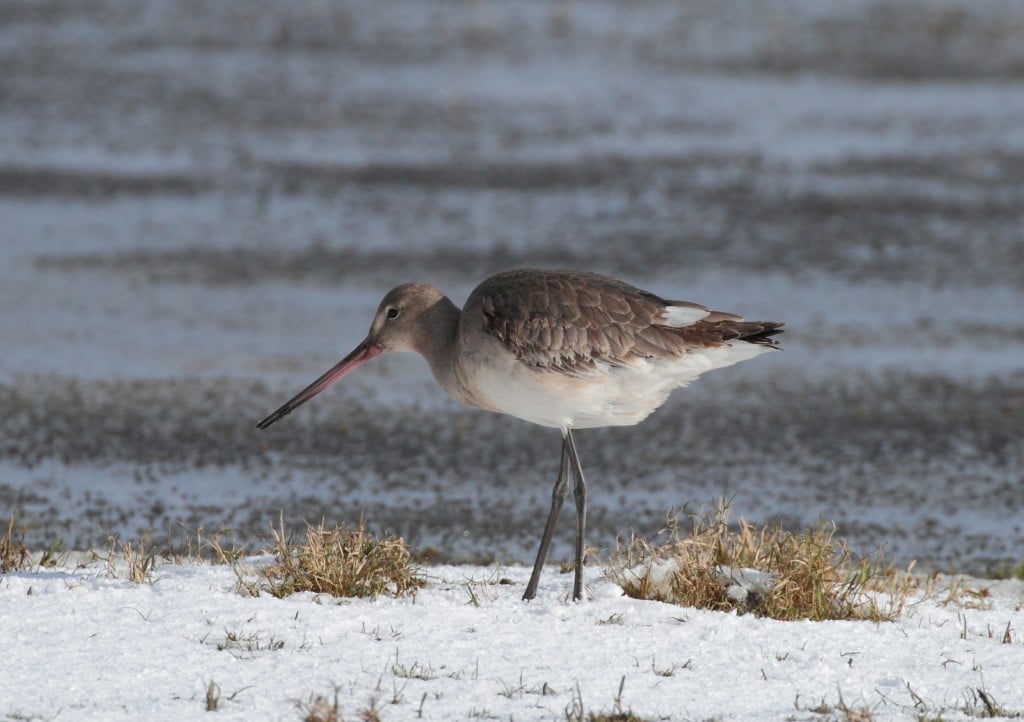
Black-tailed Godwit feeding in the snow.
The day that the snow first arrived saw an unusual gathering of waders right beside the car park attendant’s hut at Lady Anne’s Drive. Snipe usually keep well hidden, in part due to their cryptic plumage yet forced to find ice free feeding grounds their brown and yellow stripy markings against the white snow make them anything but invisible! Alongside the Snipe were birds such as Black-tailed and Bar-tailed godwits, Ruff, Lapwings and Oystercatchers; all were ‘tame’ and eagerly pulling out worms from some pools beside the fence. The next day with the blizzard at its fiercest they had all departed as the pools iced over and the biting wind blew the snow across the fields. In the woods Woodcocks became very obvious. Usually hiding in well vegetated damp spots, they are often impossible to see unless flushed by which time all that will be seen are brown shapes disappearing off into the distance. They are also generally more active at night but in the snow and particularly if the ground freezes hard, Woodcock move out in the daylight hours to feed alongside open tracks where like their relatives the Snipe, they are easy to spot. We counted over 40 in the pinewoods during and just after the snow many of which could be seen probing for worms through the snow.
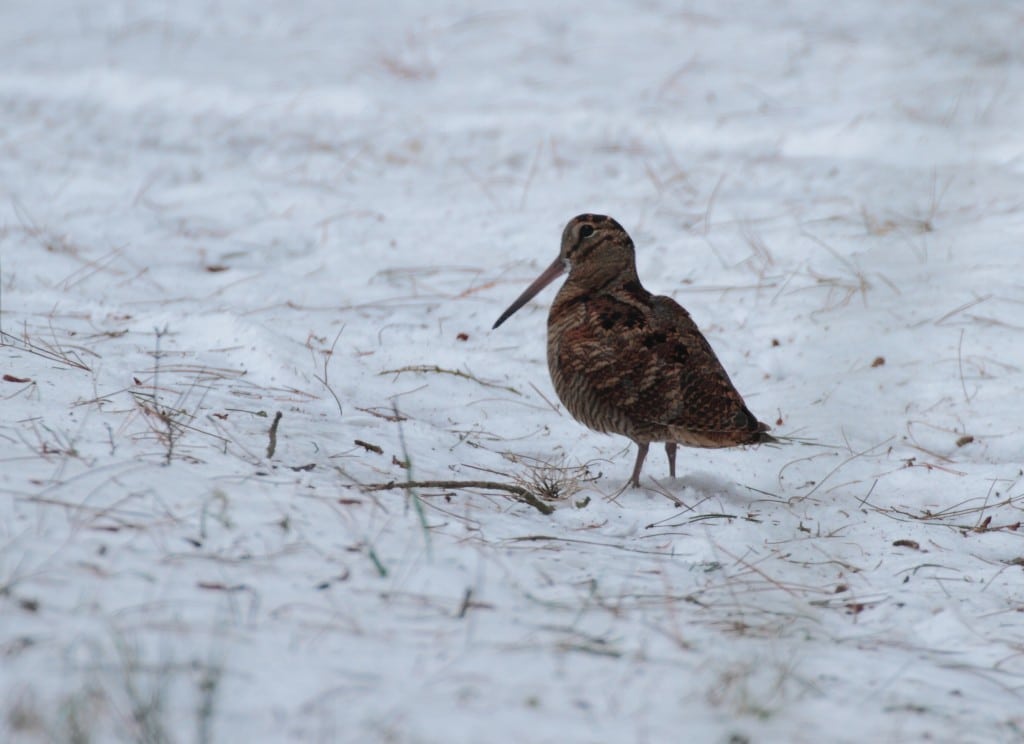
Uncharacteristically tame Woodcock came out from the depths of the woods.
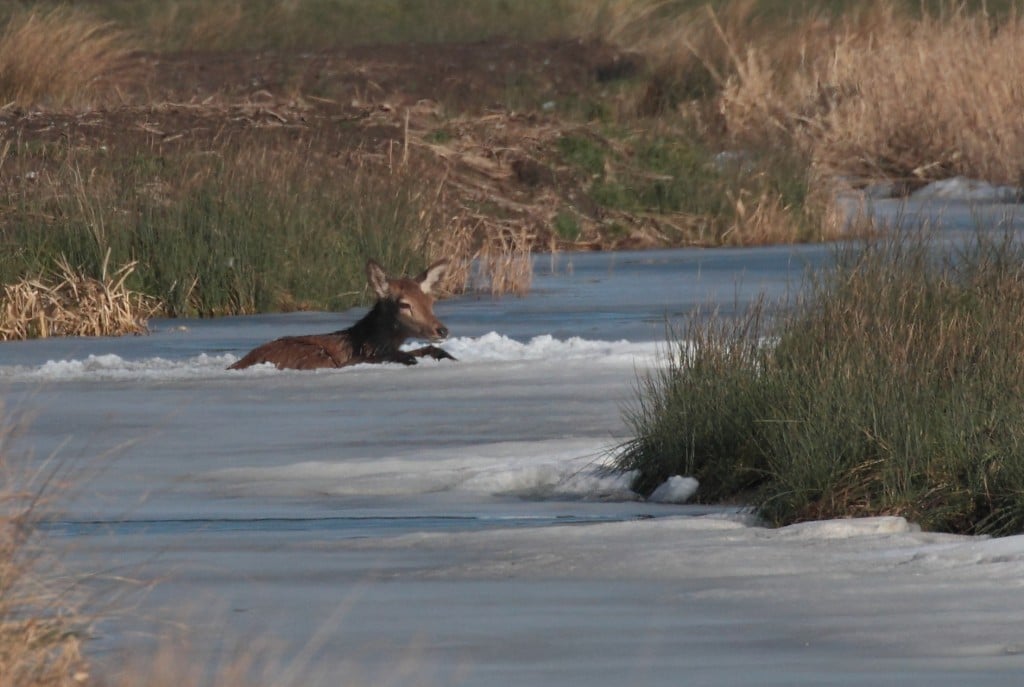
This Red Deer was struggling to escape from an icy dyke.
Red Deer frequent our grazing marshes in small numbers and are truly wild beasts, being far more alert and scrawny looking compared with those seen in the deer park. Even these were struggling. One was seen stuck in an icy dyke although it finally escaped unharmed as we were about to launch a rescue mission. Others moved into the pinewoods where strangely we seldom see them and here were noted stripping off bark from elm saplings, something we could have done without. Another less welcome aspect of the cold snap was the amount of Muntjac that became more confiding within the woods and ultimately becoming a target for dogs.
A minimum of 30 have been killed by dog attacks this winter, not a very nice statistic. It would quite prudent for visitors to bare this in mind and keep their dogs on leads whilst on the reserve to prevent even more attacks. It was not just animals that suffered; the aforementioned wading birds ultimately had a real bad time. After the bad weather eased a series of high tides washed ashore large numbers of dead birds along the edges of the saltmarshes. Hardest hit were Redshanks and Dunlin, they were found at all points around the reserve sometimes ten at a time within a 100 metre stretch. The final number that suffered can only be surmised. Lapwings, Curlews and Knot were also found.
One poor Golden Plover close to Lady Anne’s Drive was found dead, frozen solid, still standing in a snow drift where it presumably hunkered down to escape the unrelenting wind. Little Egrets were reported dead all along the north Norfolk coast including eight in one small wood where they roost and whilst we only found one victim it was rather telling that our regular roost site had only a single bird after the weather had eased. Fieldfares, those large grey thrushes from Scandinavia, are usually wild and wary yet they too became tame and approachable – a sure sign they were not in good shape.
Fieldfares rely on the winter berries of hedgerows so with the cold snap occurring late on this year they suffered from a dearth of food as most hedgerows had either been cut or stripped from earlier feeding. With spring imminent it will be very interesting to see how nature recovers, the birds in particular. Both Lapwings and Redshank are amongst our key breeding species and with far lesser numbers now present our only hope is that more might appear from elsewhere to bolster our current meagre local population.
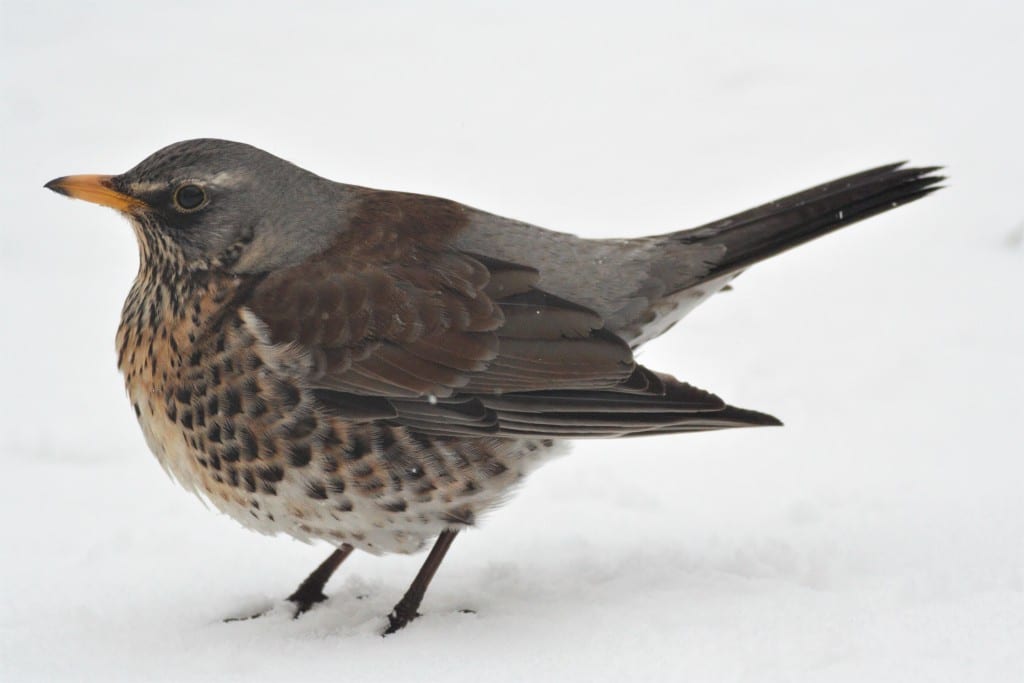
Fieldfares are usually very wary but in the snow they become more bold as they search for any berries left on the hedgerows.
The strong cold winds also had a detrimental effect on the sea life offshore. Vast numbers of star fish and various crustaceans were washed ashore all along the east coast due it is thought to the plummeting temperatures in the sea. We got off far lighter than many beaches further north although at Overy beach the shoreline was littered with Sunstars and Slipper Limpets with smaller numbers of Velvet Swimming Crabs and even lobsters. In all my years of walking the beach at Holkham I had never previously seen or even heard of lobsters appearing until this year.
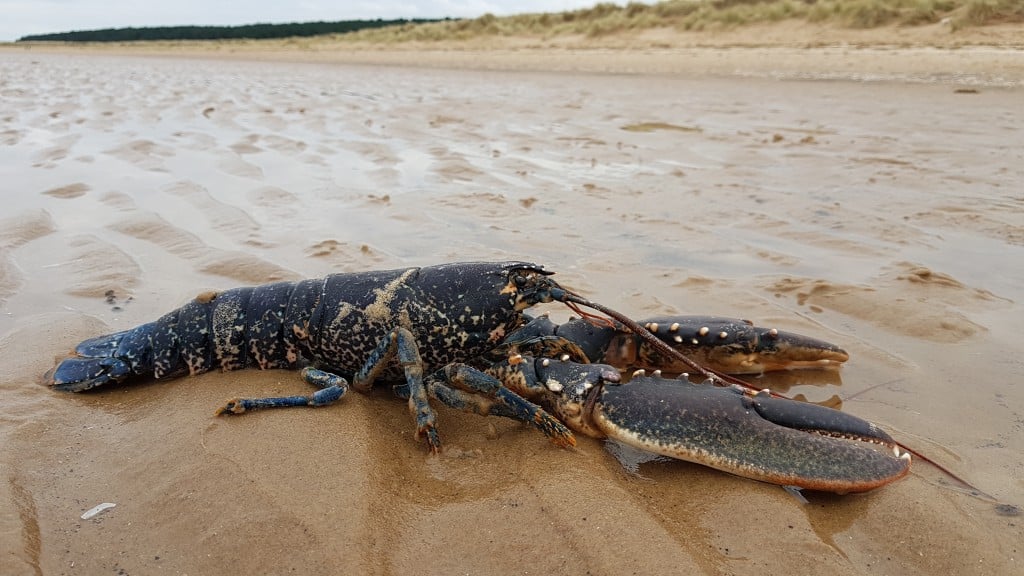
Lobsters very seldom appear on our beaches.
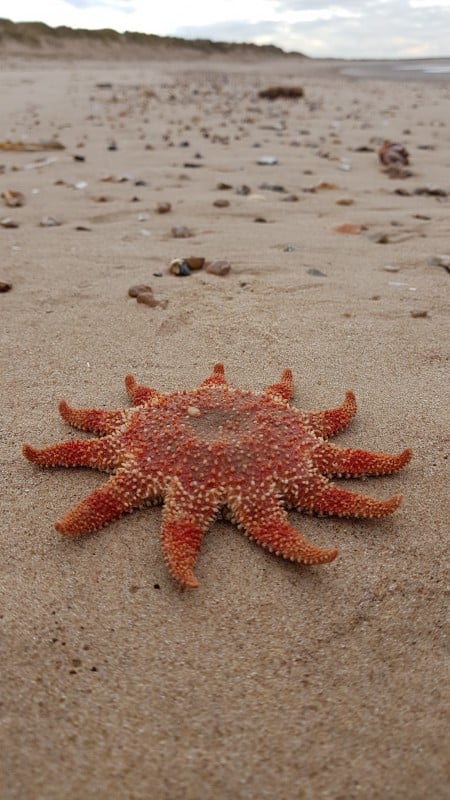
The Sunstar, an exotic looking member of the starfish family.
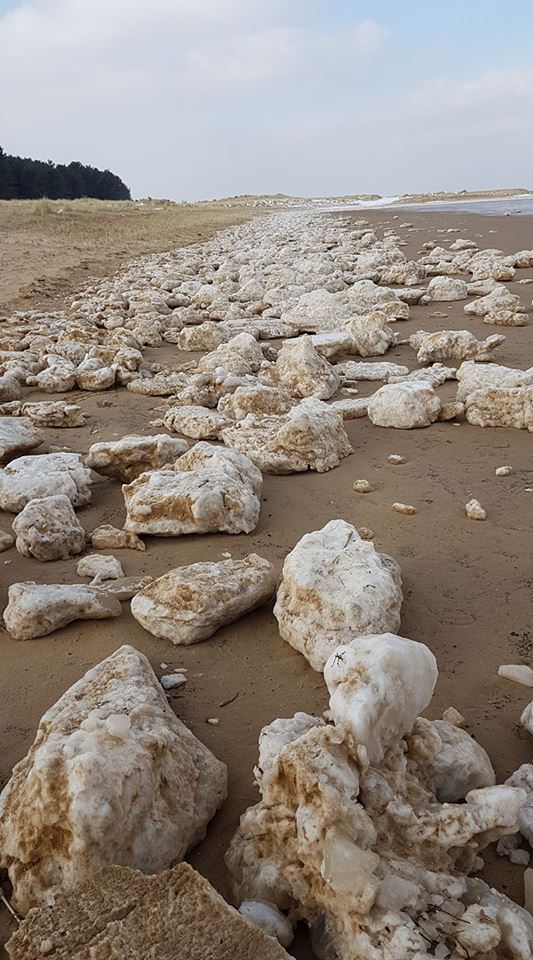
An unusual sight was an accumulation of large lumps of ice along the shoreline that looked like boulders.
View all latest blog posts here.
Back to Journal Back to Journal